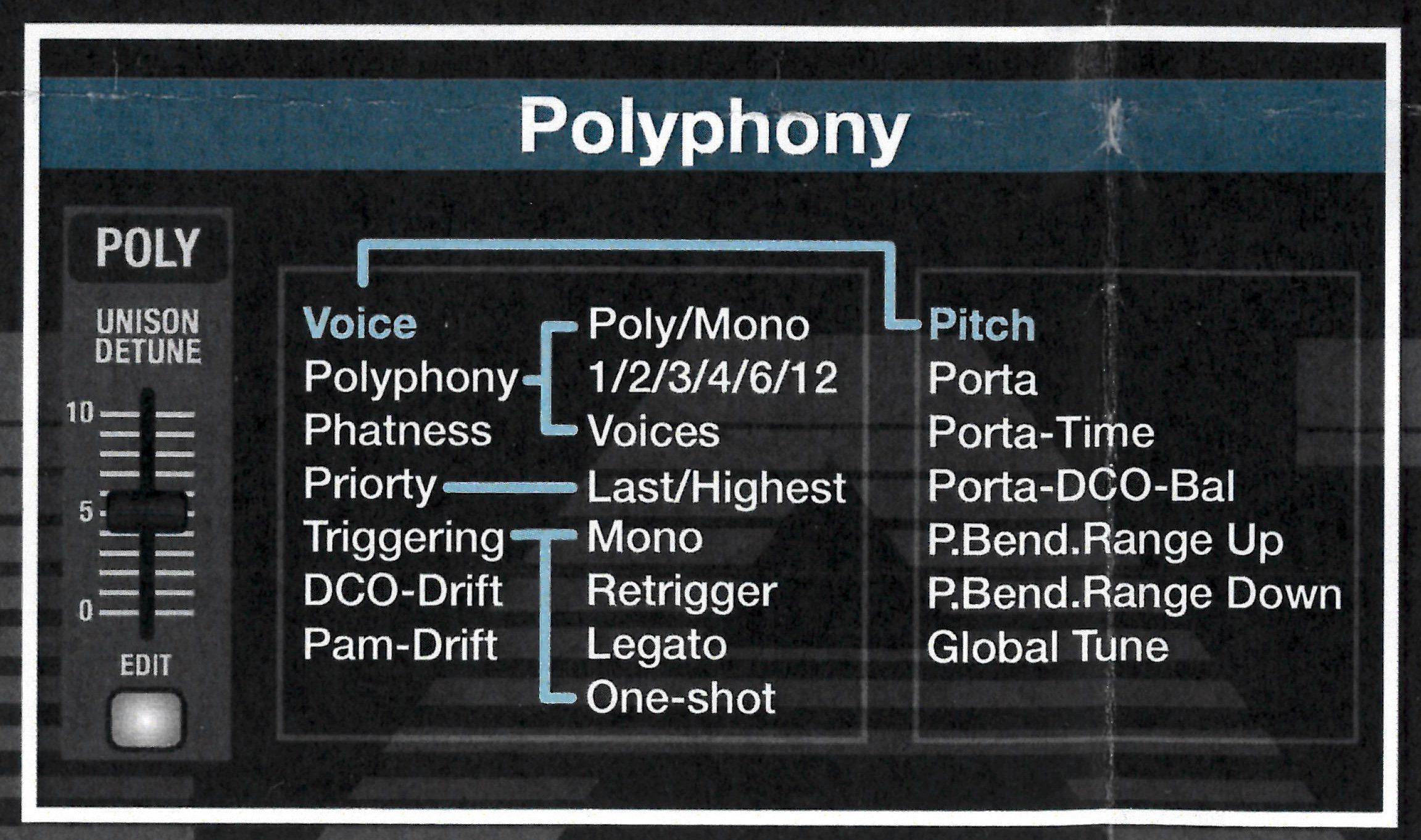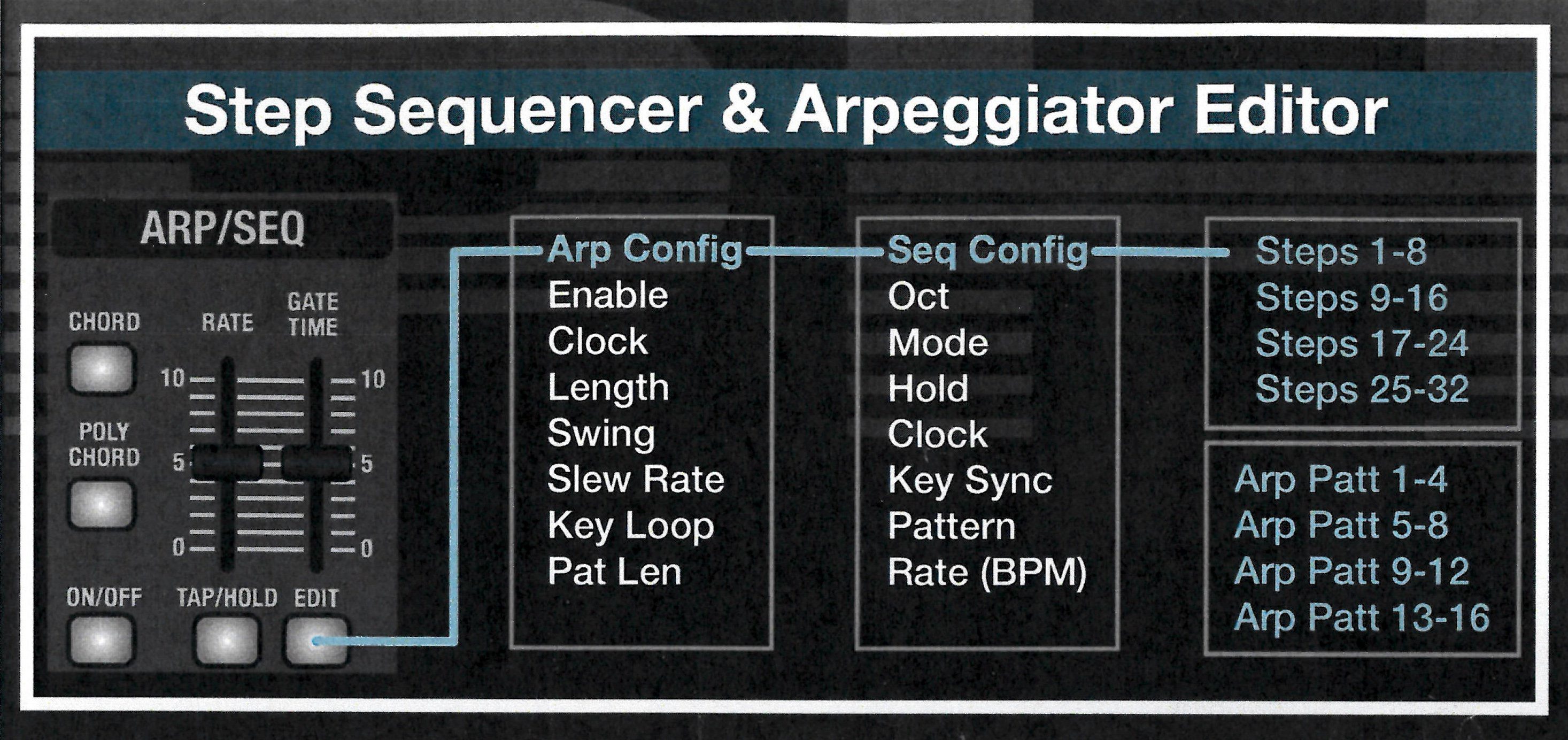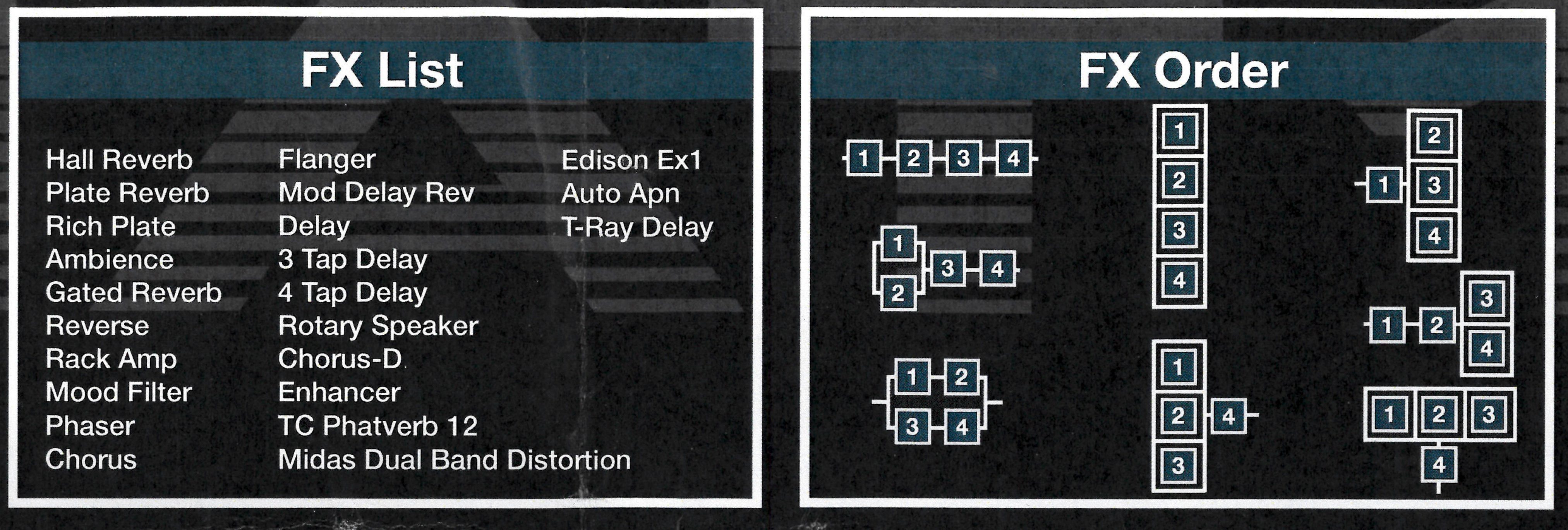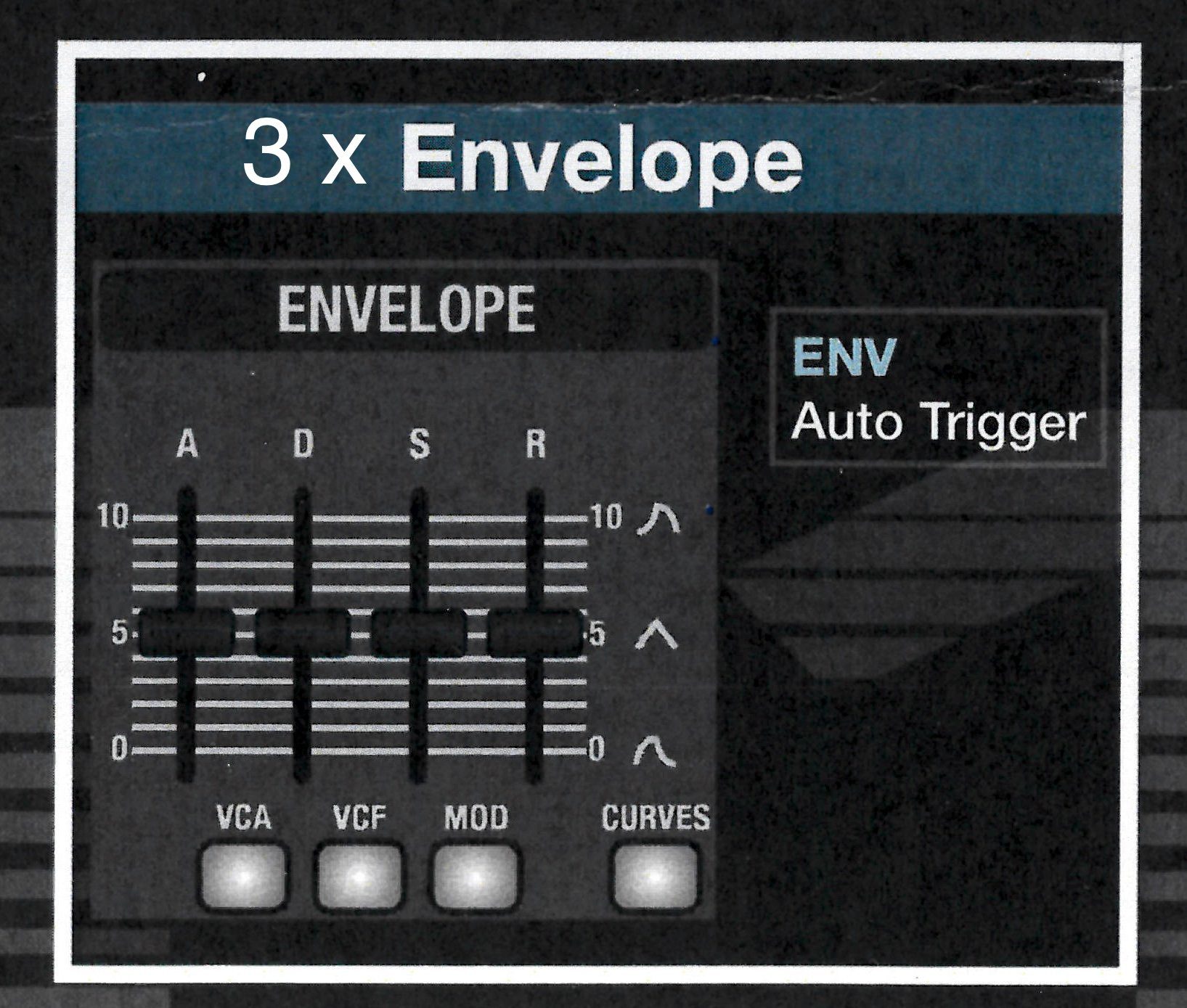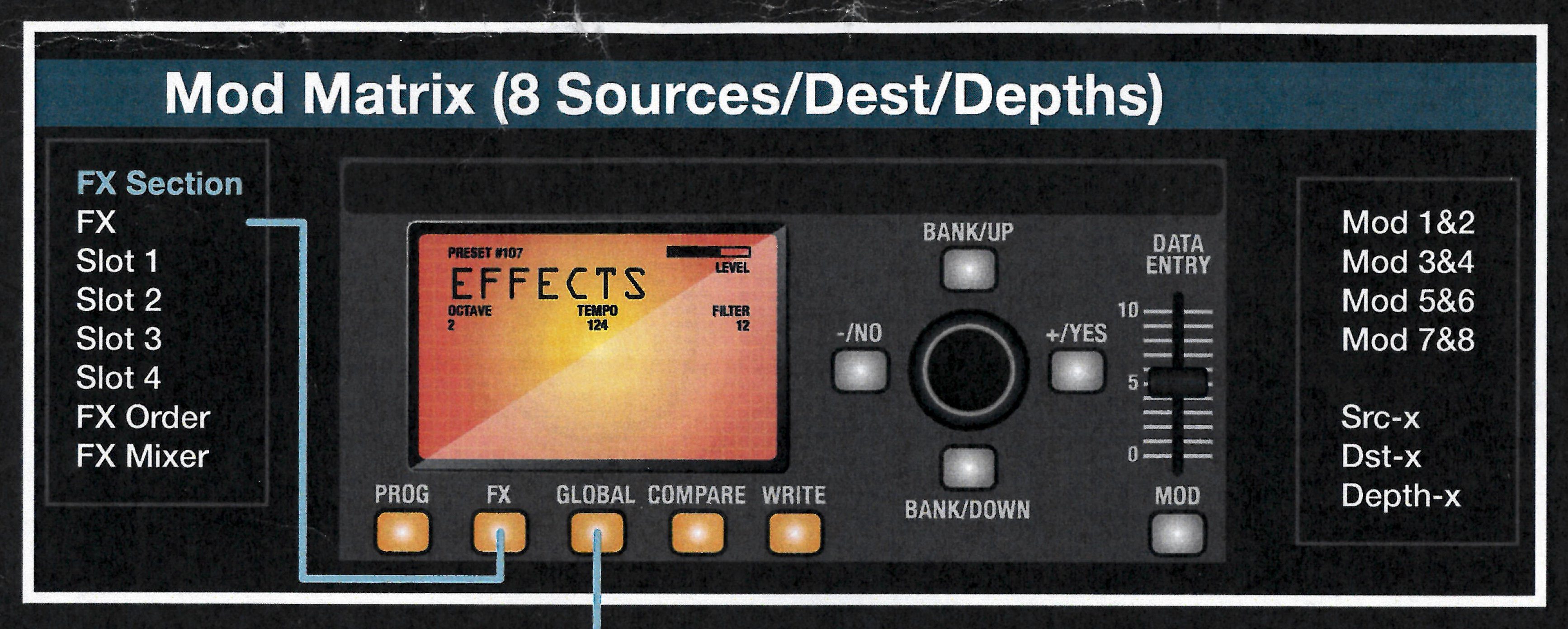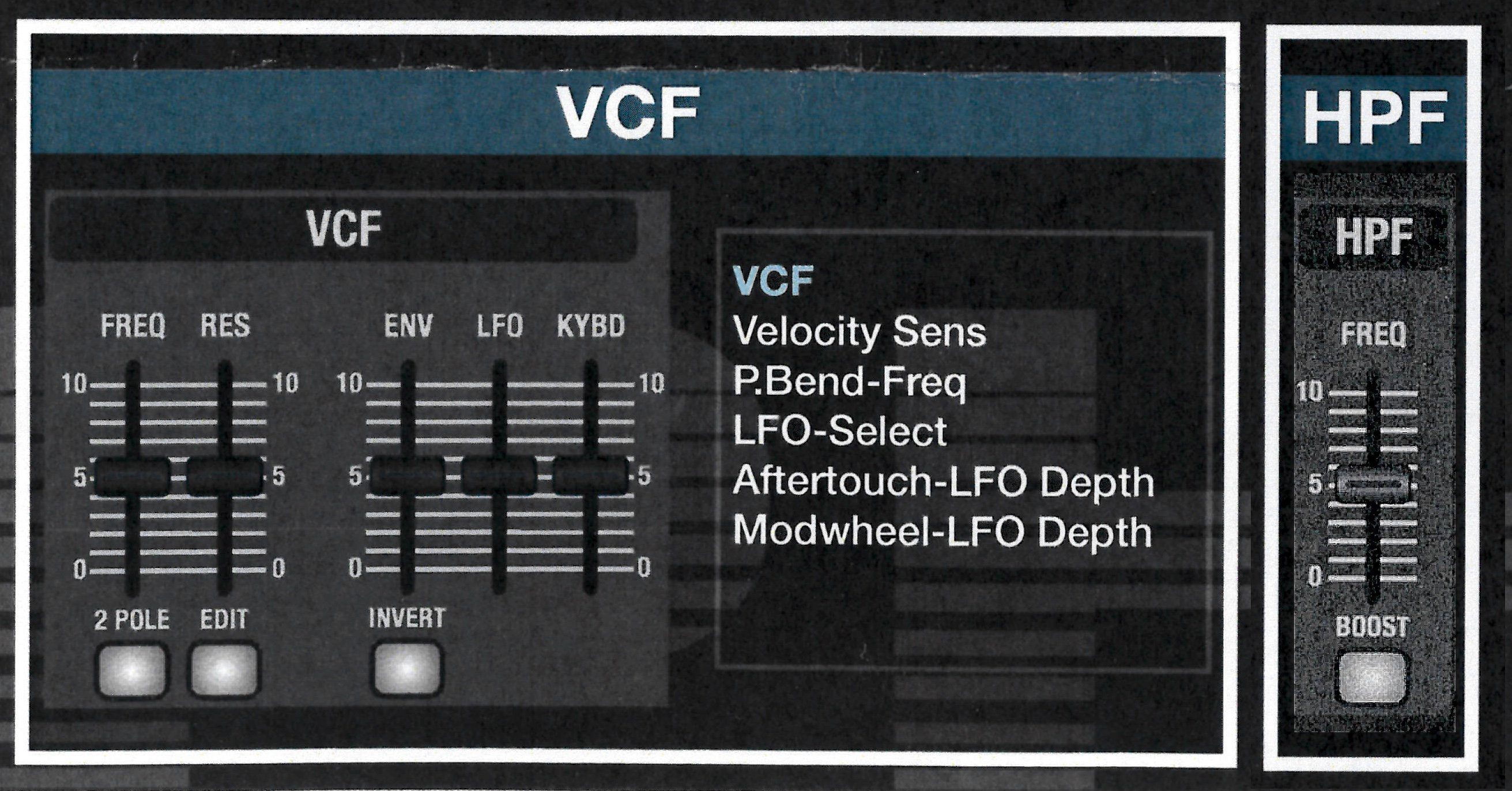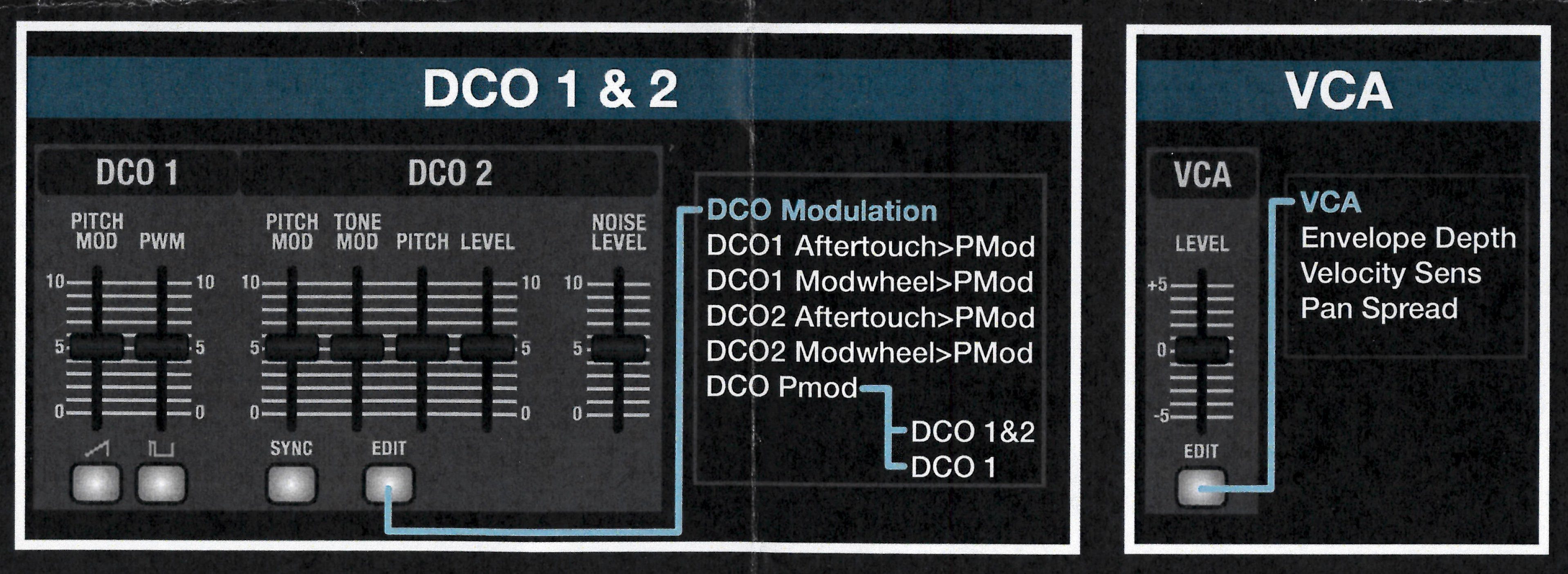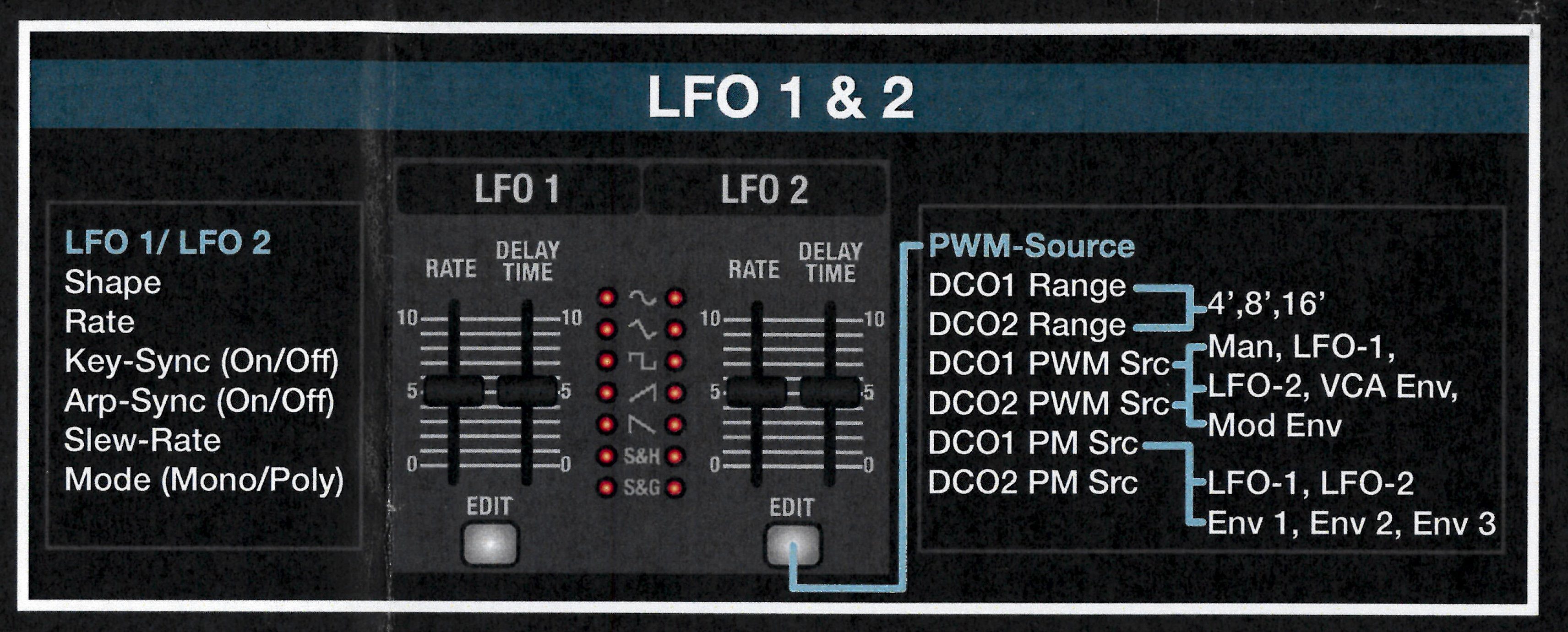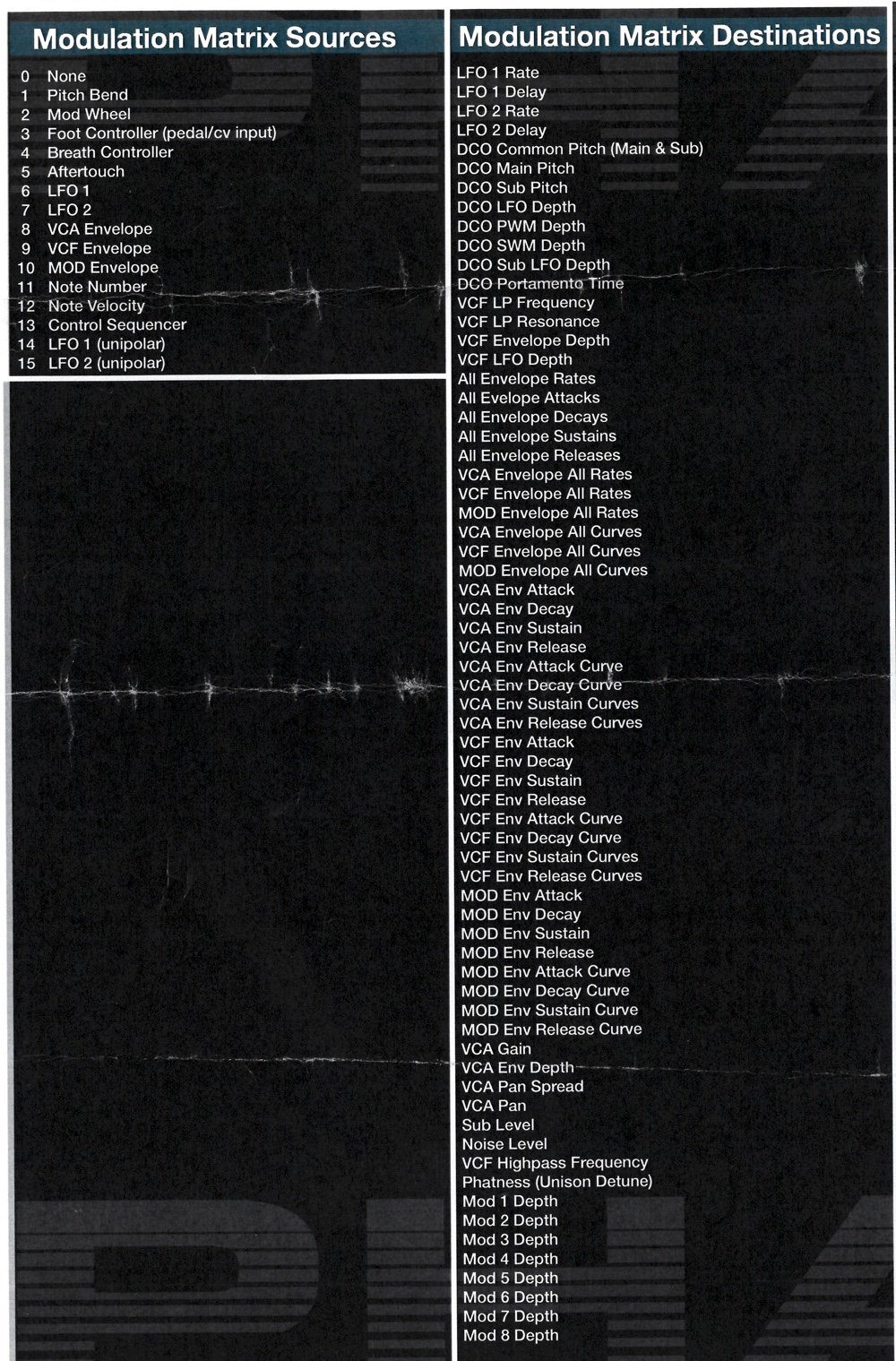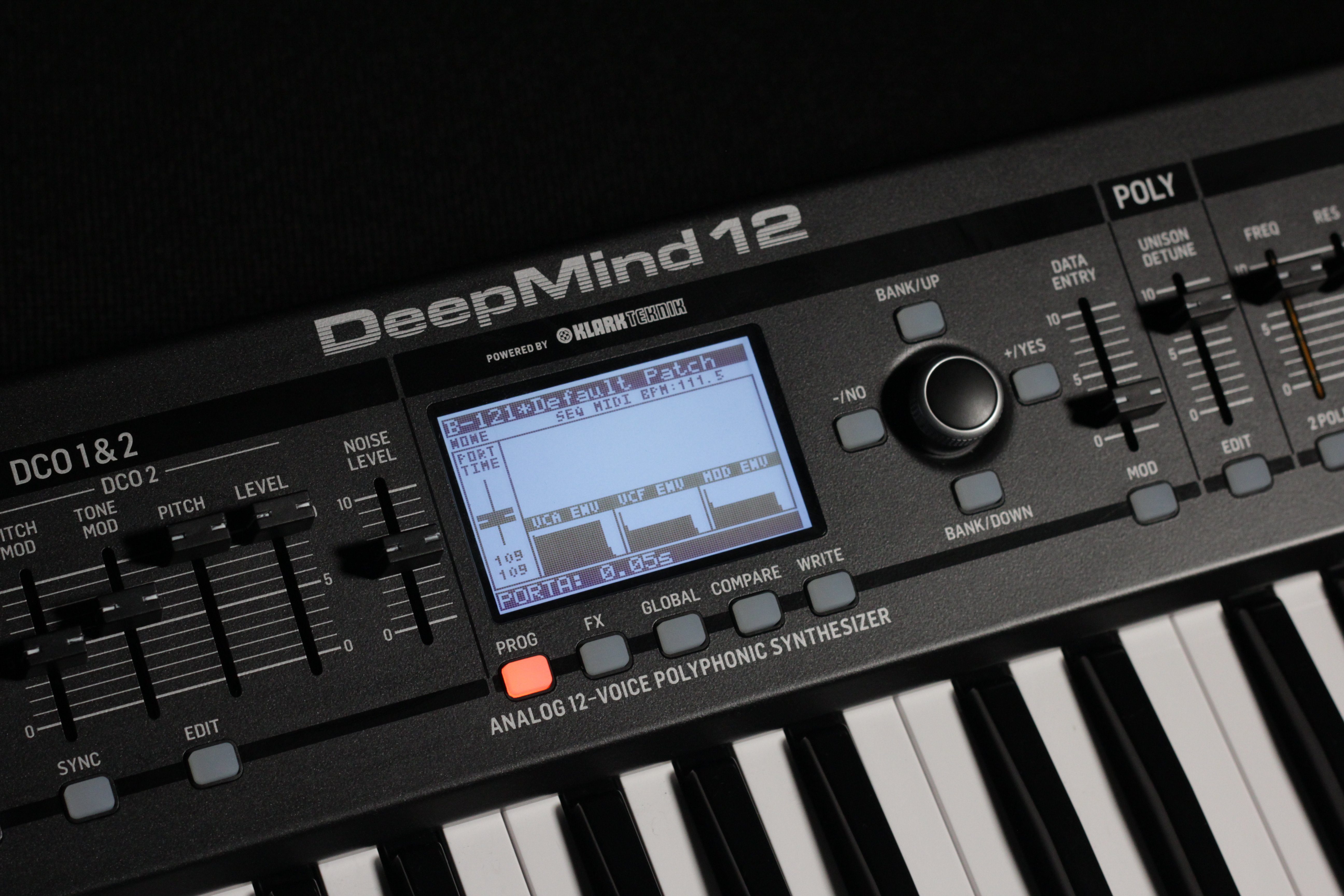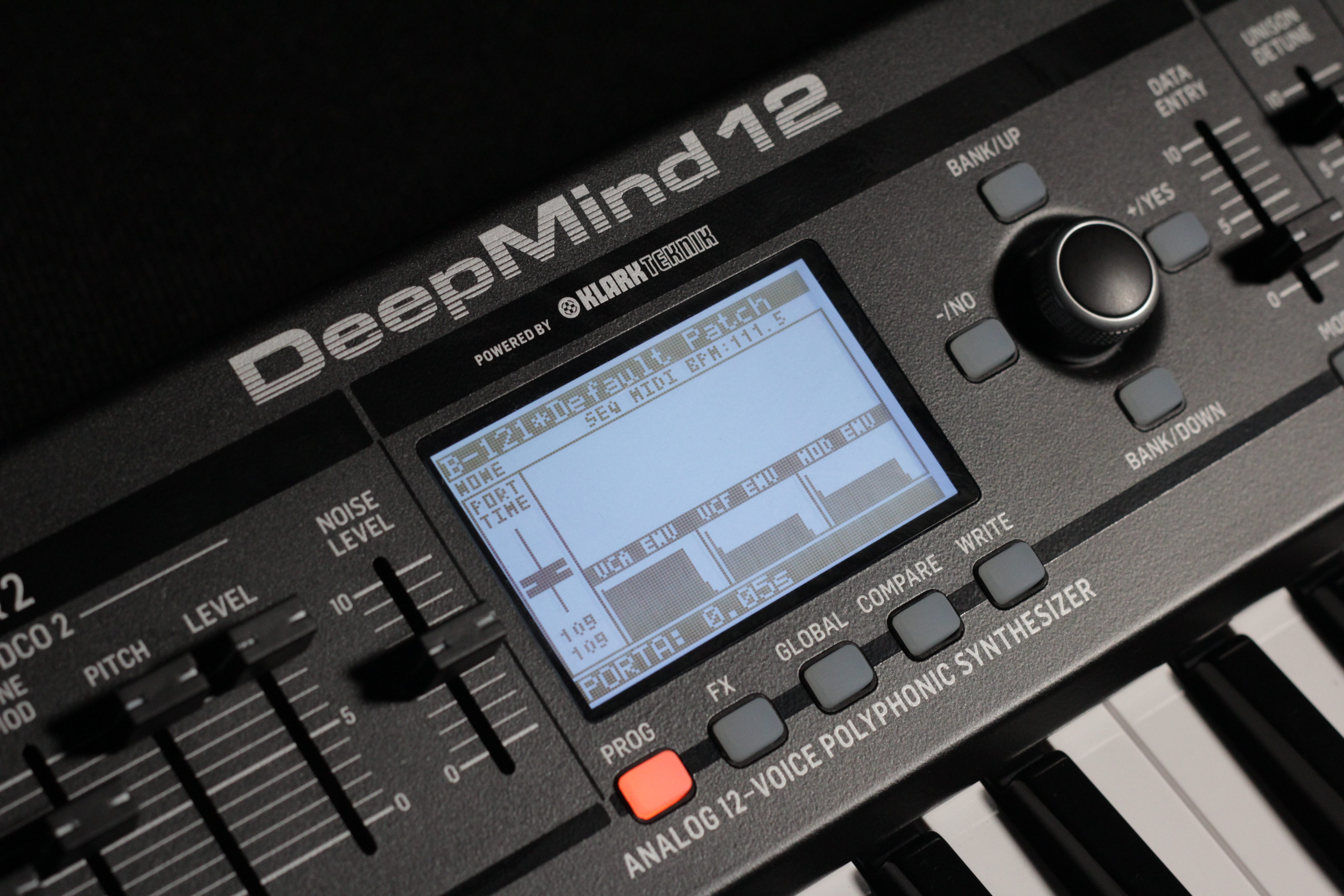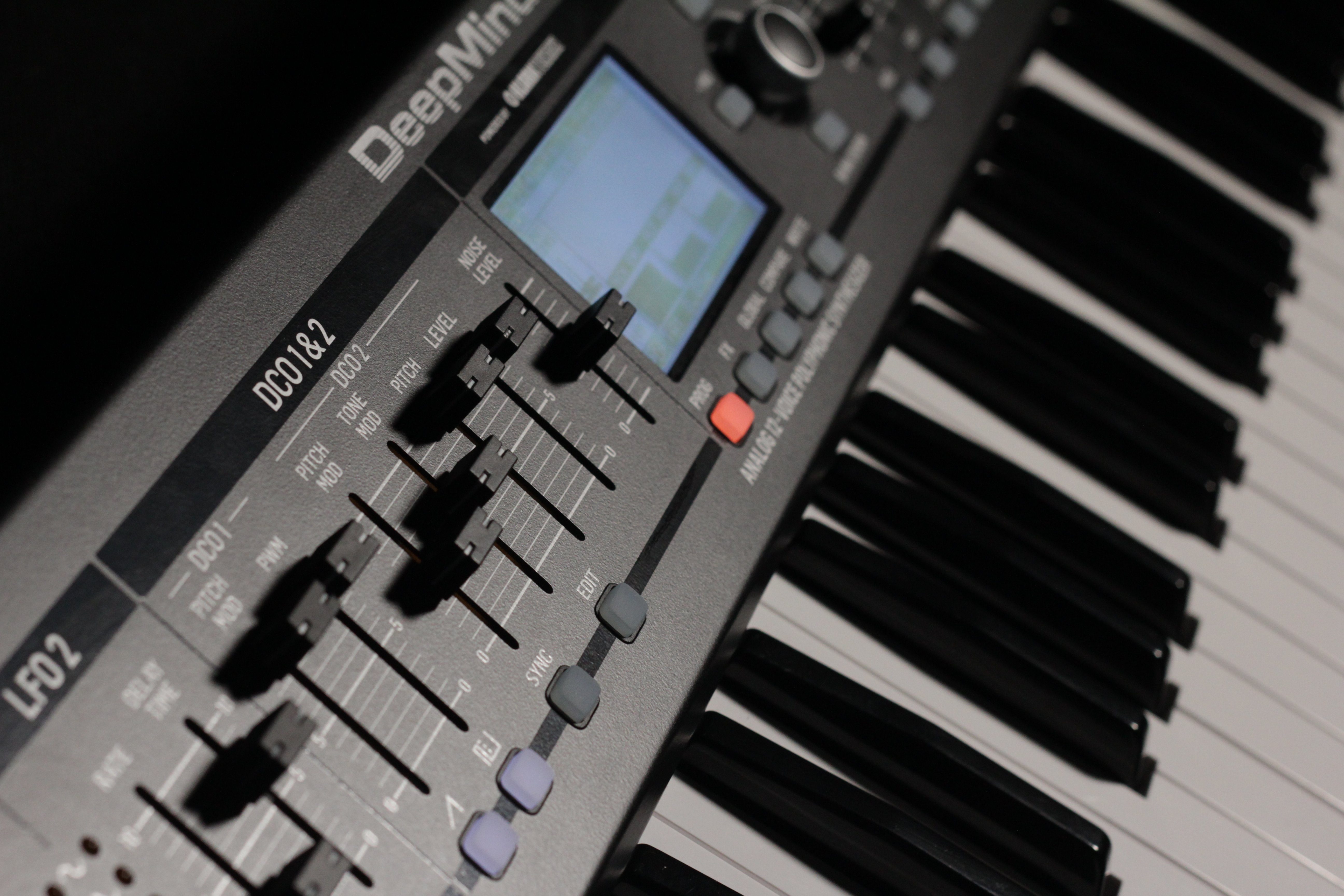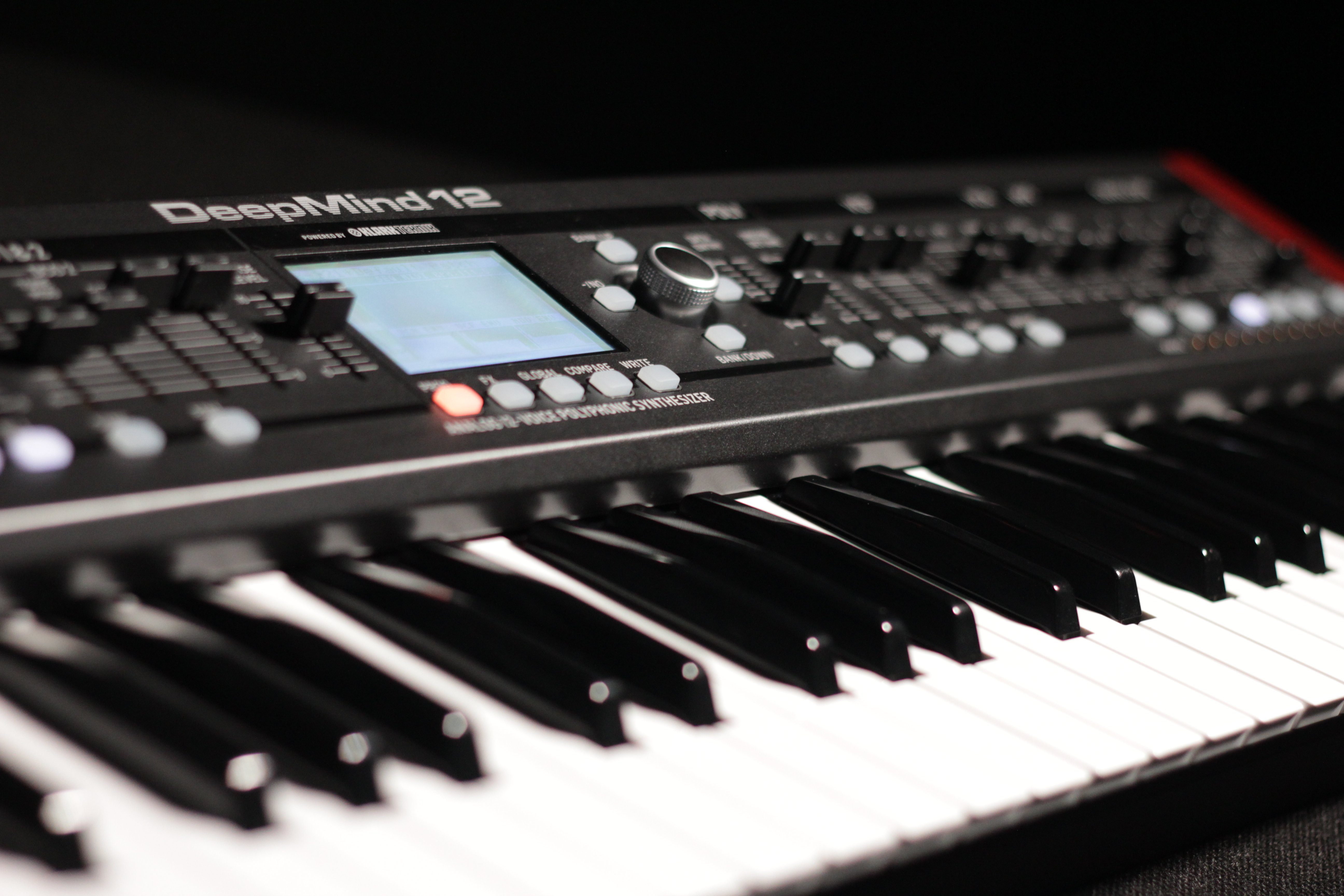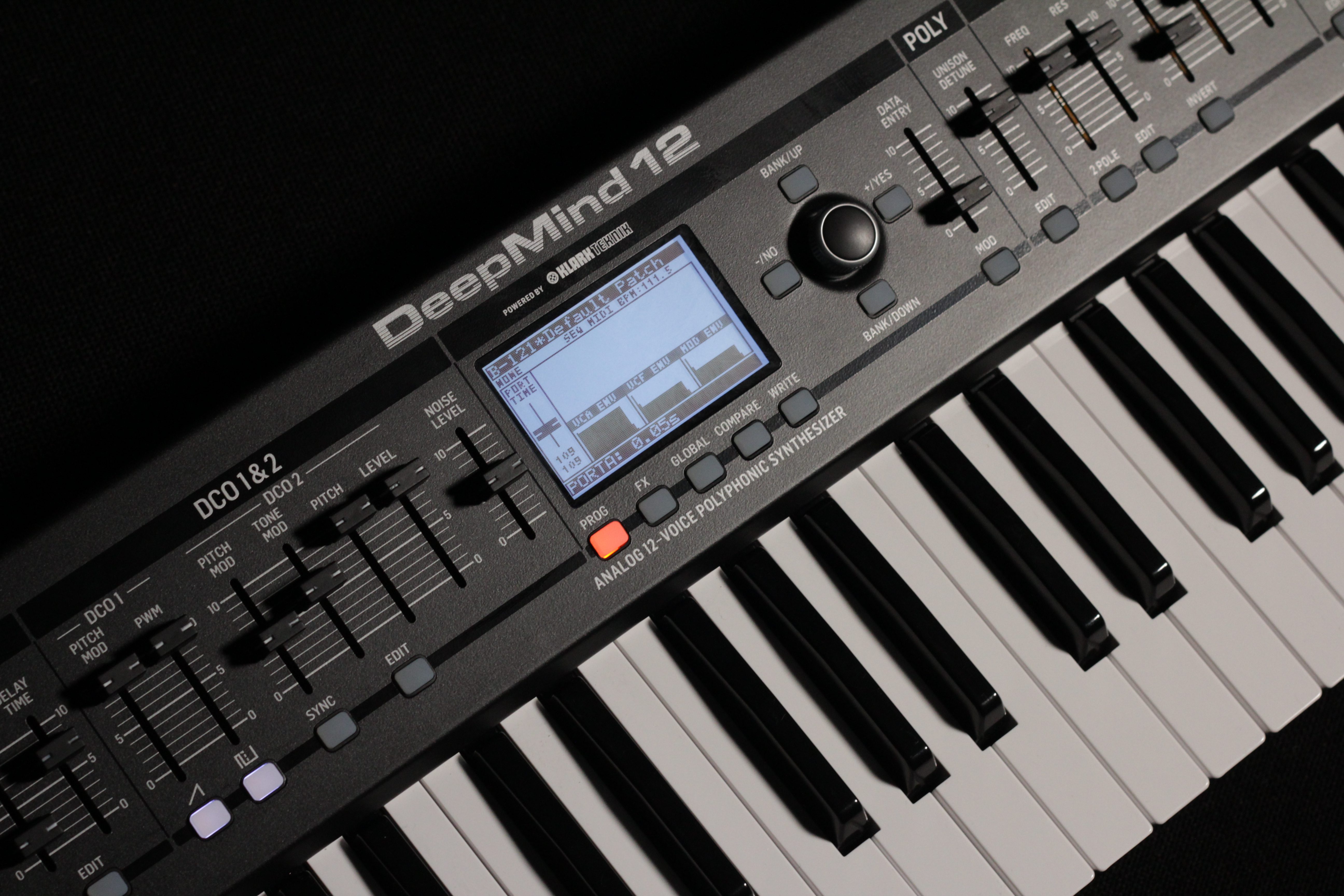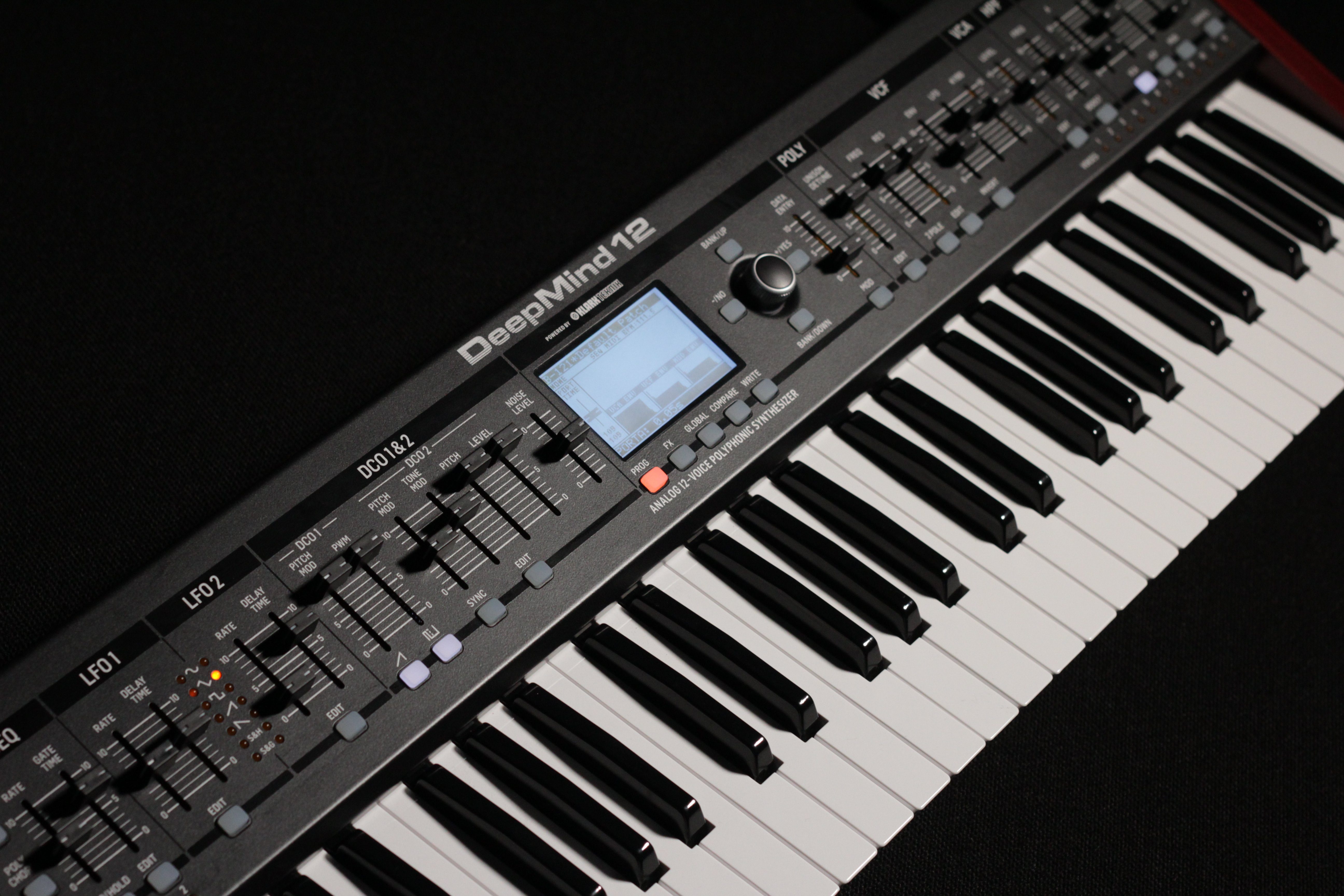Yes you are right. Just noticed that the saw and square waveforms on dco 1 can be activated simultanously and that is exactly the principle of the Juno. I thought it was a selector that worked for both dco 1 and 2. This makes dco 2 a phase locked square sub instead. It all makes sense now considering it began as a Juno 106 clone. Forget all my earlier jx vs juno speculations in this regard. I stand corrected, though it still doesn't give us a three octaved bass but neither did the Junos, since the saw and main square can be layered but not octaved.Uncle E wrote:It seems that DCO2 is an expanded version of the Juno-106's sub oscillator.
So what we have is simply a Juno on steriods. Interesting.
Edit: Hmm...then again, there is an edit botton below dco 2 so maybe there is more to it than meets the eye after all.
Edit 2: if there is more it would likely be a waveform selector and not an additional sub, since the mod matrix only mentions a main dco and a sub dco corresponding to dco 1 and 2.


